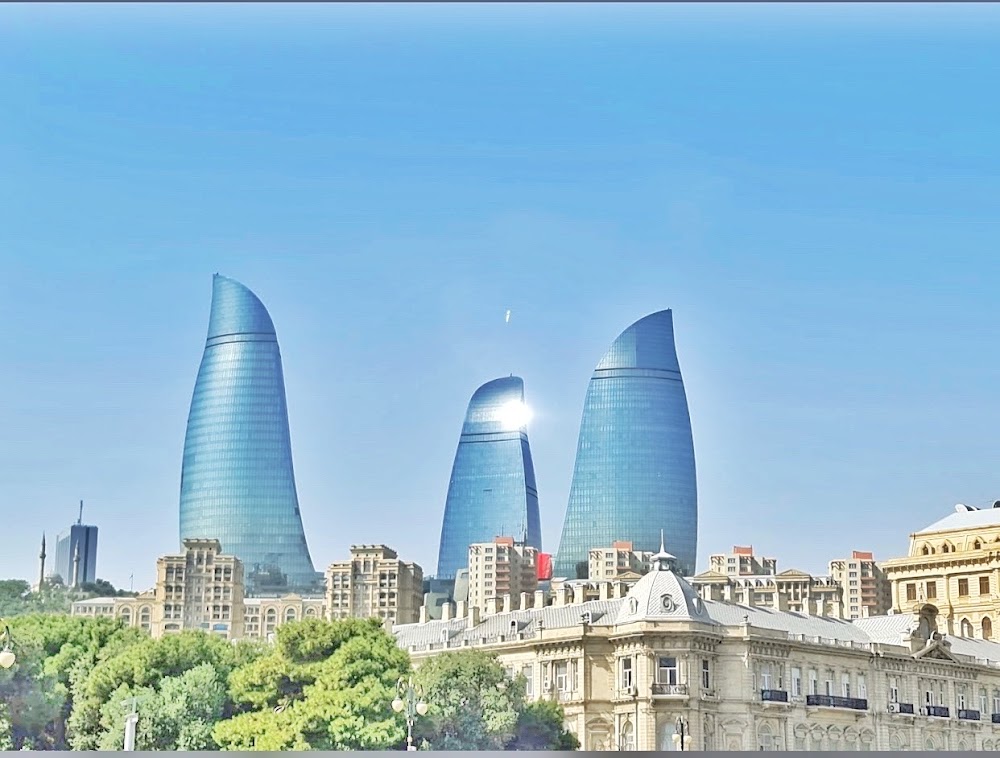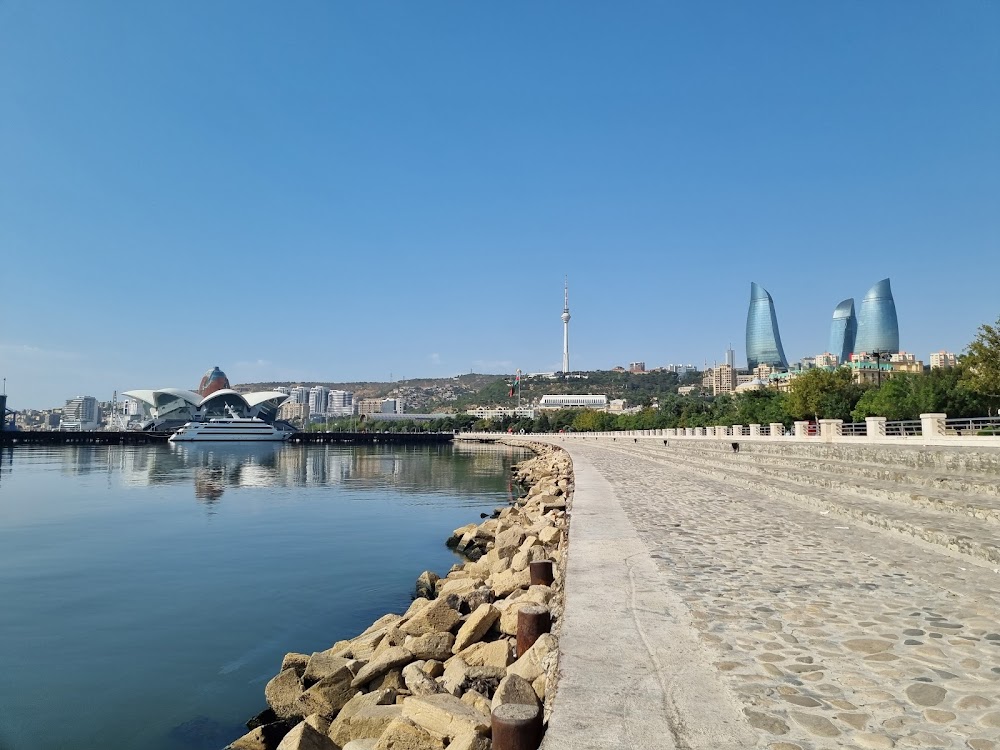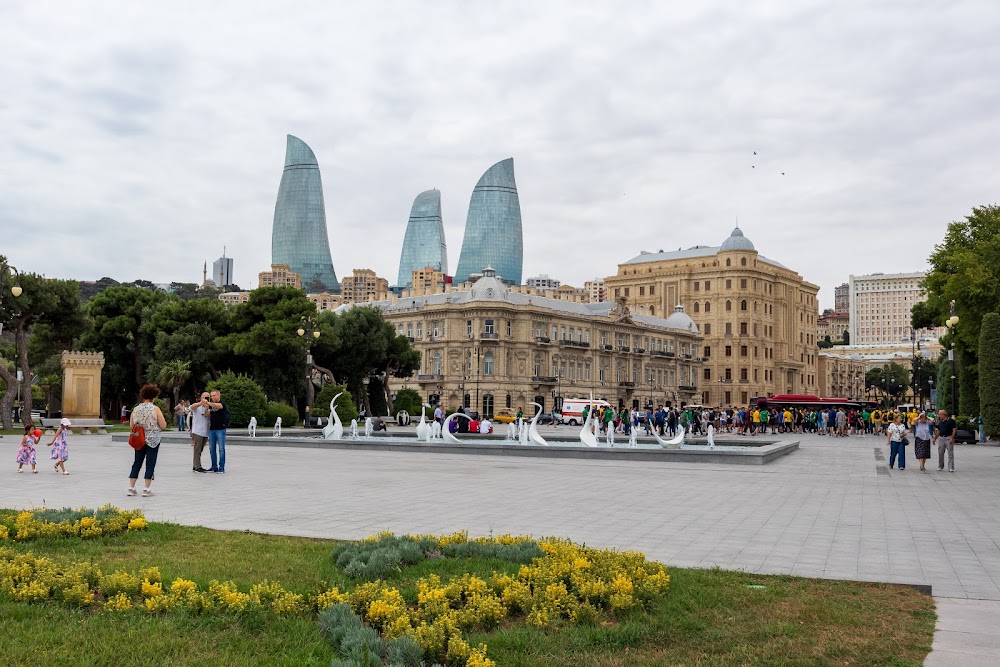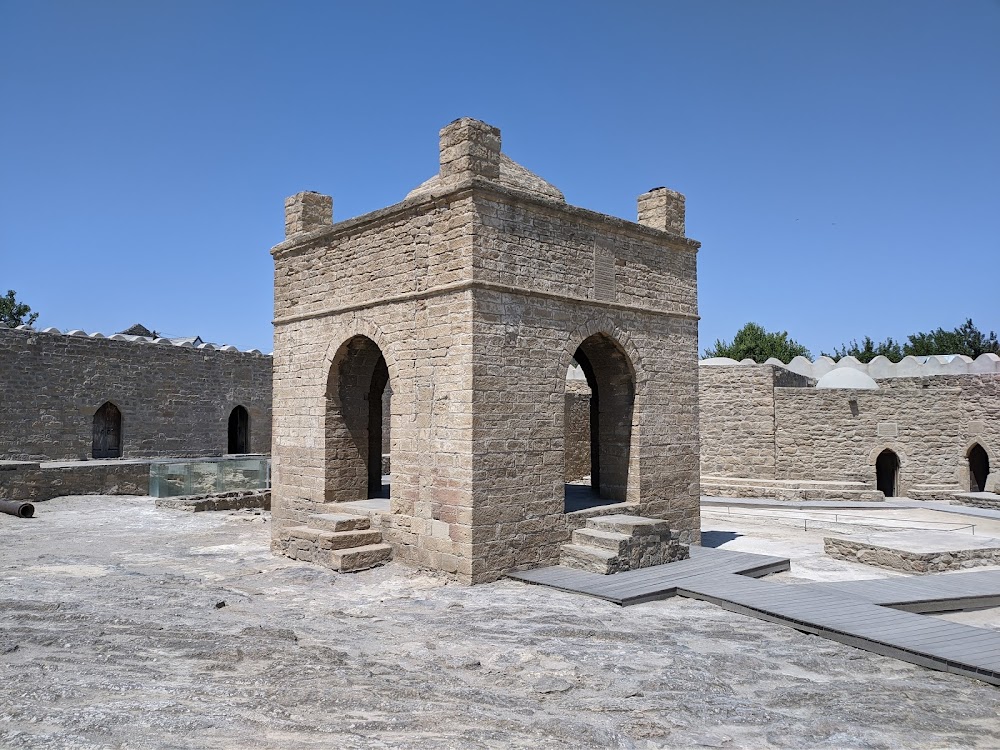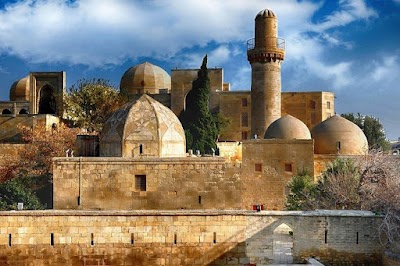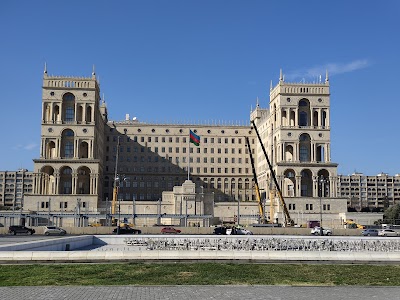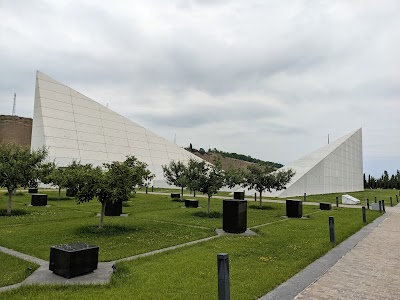Baku Boulevard (Bakı Bulvarı)
Overview
Dənizkənarı Milli Park: A Jewel of Baku
Dənizkənarı Milli Park, affectionately known as Baku Boulevard, is a cherished public space in Baku, the vibrant capital of Azerbaijan. Stretching gracefully along the shores of the Caspian Sea, this iconic park has delighted residents and visitors alike for over a century, serving as a perfect backdrop for leisure and enjoyment.
The park's origins trace back to 1909, during a time when Azerbaijan was a part of the Russian Empire. The initial vision was to create a scenic promenade along the coastline, a dream brought to fruition by Mammad Hasan Hajinski, a key figure in urban development. The park was constructed with a harmonious blend of European and oriental architectural styles, showcasing the rich cultural tapestry of Baku during that period.
In its early years, Baku Boulevard was adorned with ornamental trees, vibrant flowerbeds, and inviting benches, becoming a popular gathering spot for leisurely strolls and social interactions. Over the decades, the park underwent numerous expansions and enhancements. A significant reconstruction phase occurred in the 1950s, during the Soviet era, which introduced modern features such as fountains, pavilions, and lush green spaces, elevating the park's aesthetic allure.
The early 2000s marked another pivotal moment in the park's evolution, coinciding with Azerbaijan's economic growth. A comprehensive renovation plan was initiated, resulting in the doubling of the Boulevard's size and the introduction of modern amenities. Highlights from this period include the chic Baku Ferris Wheel, known as the "Baku Eye," offering stunning panoramic views of the city, and the impressive Crystal Hall, which famously hosted the Eurovision Song Contest in 2012.
One of the most enchanting additions to Baku Boulevard is the "Mini-Venice," a picturesque area featuring canals, bridges, and gondolas that evoke the charm of Italy's famed city. This delightful attraction allows visitors to enjoy serene boat rides, immersing themselves in a little slice of Venetian magic right in Baku.
Additionally, Baku Boulevard boasts a variety of cultural and artistic installations. Notable pieces include the captivating sculpture “My Heart is in the Mountains” by Georgian artist Zurab Tsereteli and the innovative revolving "Baku Venice" fountain. This seamless integration of nature and art ensures that each visit to the park is a unique and enriching experience.
Modernization efforts have also prioritized sustainability, with the expansion of pedestrian zones and the introduction of bike lanes to promote a healthier lifestyle among residents. Cutting-edge lighting systems and Wi-Fi coverage throughout the park enhance its convenience and appeal as a top destination.
Recent expansions further emphasize eco-friendliness, incorporating green technologies like solar-powered lighting and efficient water management systems. These initiatives align the park's maintenance with contemporary environmental standards, solidifying its reputation as a progressive public space.
Today, Dənizkənarı Milli Park is not just a serene escape; it is a vibrant cultural hub that hosts a plethora of events and festivals year-round, from music concerts to dazzling fireworks displays. The park’s thoughtfully designed spaces cater to a variety of activities, whether visitors seek tranquil retreats or lively entertainment.
Culinary enthusiasts will find plenty to savor at the array of cafes and restaurants lining the Boulevard. Offering everything from traditional Azerbaijani dishes to international cuisine, the dining options make it an ideal spot for food lovers to indulge in delightful culinary experiences.
In summary, Dənizkənarı Milli Park stands as a testament to Baku's rich history and its ongoing evolution. With its captivating blend of natural beauty, modern conveniences, and cultural vibrancy, it embodies the dynamic spirit and lasting charm of this remarkable city.


